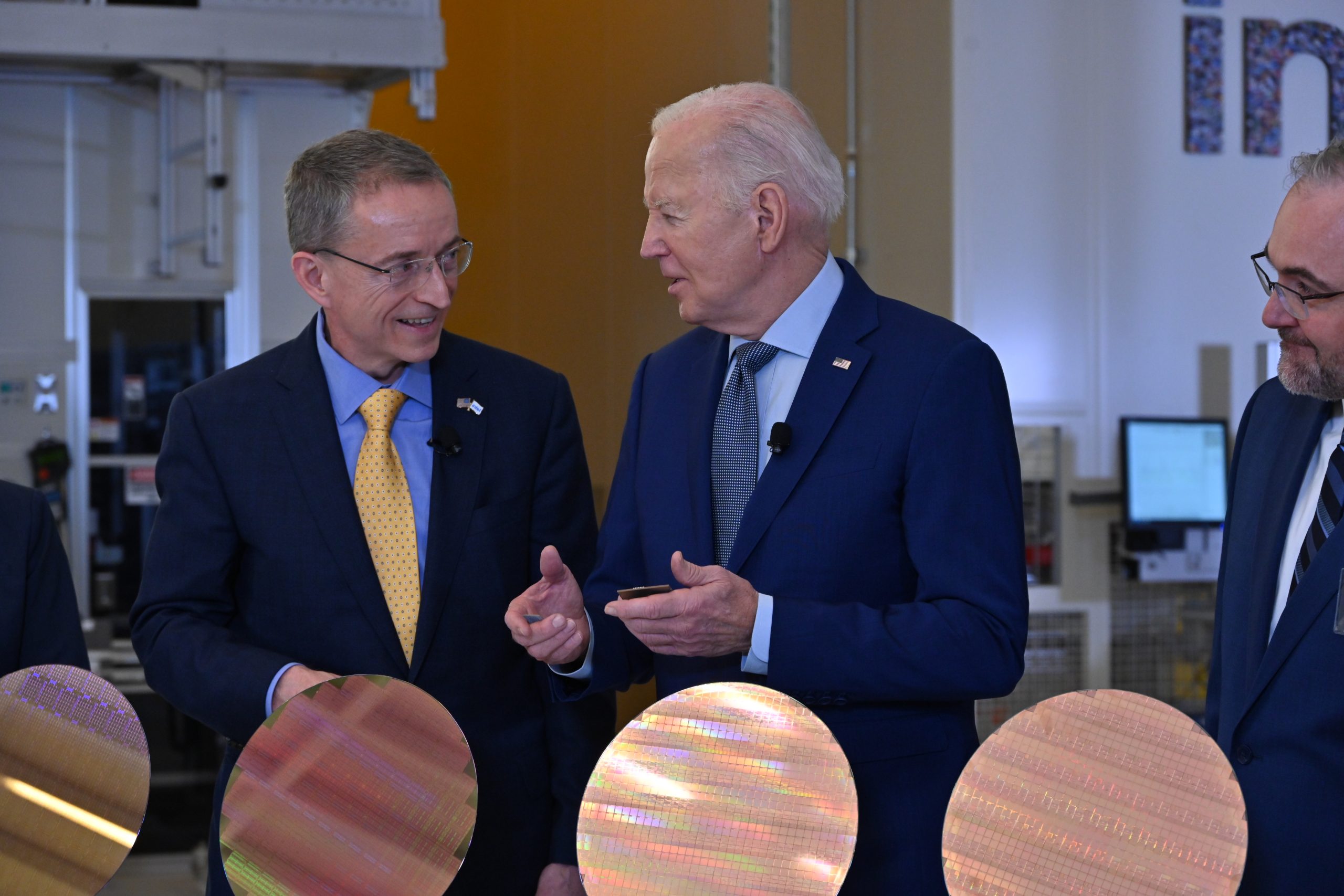Intel Says $7.86bn Grant From US Will Restrict Foundry Spin-off

Chip giant’s plan for Intel Foundry to be spun off as independent subsidiary will be restricted after US government grant
|
Getting your Trinity Audio player ready...
|
Intel delivered some bad news for outside investors hoping to acquire a stake in its foundry business, when it is spun off from the chip giant.
Reuters reported Intel as stating in a filing on Wednesday that its deal for $7.86 billion in US government subsidies, will restrict it’s ability to sell stakes in its chip-making unit if it becomes an independent entity.
Earlier this week the Biden administration had finalised an award of $7.86 billion (£6.27bn) in federal funding to Intel under the Chips and Science Act, in order to advance the company’s manufacturing and semiconductor packaging projects in Arizona, New Mexico, Ohio and Oregon.

Intel Foundry
But prior to that in September Intel CEO Pat Gelsinger revealed the next phase of Intel’s ‘transformation’ , which included pausing the development of two planned chip factories in Germany and Poland.
That announcement was a blow the European Union goal to produce at least 20 percent of the world’s cutting-edge semiconductors by the end of the decade.
But the central thrust part of Gelsinger’s transformation announcement was that Intel would spin off Intel Foundry (aka its chip manufacturing business) as an “independent subsidiary inside of Intel.”

Gelsinger also said at the time that the firm was open to taking on outside investors in the Intel Foundry business.
Subsidy restrictions
But in a securities filing on Wednesday, Intel reportedly said the US subsidies require it to own at least 50.1 percent of Intel Foundry if the unit is separated into a new privately held legal entity.
And if Intel Foundry becomes a public company and Intel itself is not the largest shareholder, the company could sell only 35 percent of Intel Foundry to any single shareholder before running into change-in-control provisions.
Intel did not immediately respond to a request for comment on the disclosures, Reuters noted.
A Commerce Department spokesman meanwhile said the US government is negotiating change-in-control provisions with all direct grant recipients.
Reuters noted that according to the filing, Intel would need to comply with the restrictions to continue the company’s $90 billion worth of projects in Arizona, New Mexico, Ohio, and Oregon and keep manufacturing cutting-edge chips in the US.
Any changes in control could require Intel to seek permission from the US Department of Commerce, the filing reportedly said.
Intel’s troubles
It was back in March 2021 when Gelsinger had implemented Intel’s turnaround plan (IDM 2.0), which was designed to regain the company’s competitive edge, and help it focus on revitalising its manufacturing capabilities, investing in advanced chip technologies, and expanding into new markets.
However industry observers warned it would take years to realise the plan to turn around Intel’s foundry business, and many expect TSMC to maintain its foundry lead in the coming years.
Intel shed staff in both 2022 and 2023, but then the firm in August 2024 shocked the world when it revealed disappointing second quarter financial results, and confirmed it would cut 15 percent of its 116,500 strong workforce (roughly 15,000 jobs).
Gelsinger’s confirmation that “costs are too high, our margins are too low”, coupled with weak forecasts and the suspension of dividend payments to investors, triggered the largest single day drop in Intel’s stock price in 50 years, after it plummeted 26 percent on 2 August. This caused Intel’s market value to sink more than $32 billion in a single day.
Angry Intel shareholders then sued the firm, alleging the chipmaker fraudulently concealed problems that led it to post weak Q2 results, slash jobs and suspend its dividend payment.
Intel then sold its stake in UK chip designer ARM Holdings, and then semiconductor veteran Lip-Bu Tan resigned “effective immediately” from Intel’s board of directors, amid reports of differences with CEO Gelsinger over what Tan considered Intel’s bloated workforce, risk-averse culture, and lagging AI strategy.
Tan’s exit reportedly left a vacuum of chip-industry technical and business acumen on Intel’s board, which is said to be mostly populated by leaders in academia and finance, and former senior executives from the medical, tech and aerospace industries.
In August it was reported that Intel was exploring its strategic options, allowing the board to consider a full range of options, including splitting off and selling the businesses.
In the end the board opted to halt its factories in Germany and Poland, and spin off its foundry business, alongside the huge number of job layoffs.